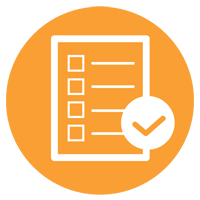Category: General
Anyone who bills Medicare or Medicaid is well versed in the impact of audits and the increasing pressure they are applying on operations. In recent years there has been mounting investigation from the Centers for Medicare & Medicaid Services (CMS) and state governments for potential fraud within healthcare providers across all sectors. It seems to be all one hears about when it comes to compliance risk.
But what about the other important sources of compliance pressure? They seem to be unjustly left out of the media attention, yet can cause just as much stress on an organization.
Commercial payers are increasing their own audits and overpayment demands. The Office of Civil Rights, as the watch dog of HIPAA compliance, is increasingly involved to guard against security breaches. And then there are the healthcare organizations’ own priorities. Business metrics (such as revenue protection and reputation) are huge drivers of compliance priorities. The livelihood of the company can be at risk. Compliance officers have to answer to both internal and external forces and it can be a lot to handle with few resources.
Yet, according to the 2017 Healthcare Compliance Benchmark Study, published by SAI Global, “48% [of survey respondents] are using manual or ad-hoc methods to manage claims denials, audits and appeals.” As margins continue to shrink and resources remain scarce, technology is essential to help vital healthcare service providers do more with less. The right tools enable best practices, improve accuracy, strengthen cash flow, and assure compliance.
It’s no surprise that according to the same survey, the top line item on budgets are narrowed in on investment in software. But where should that investment go? Is a niche compliance application necessary?
While compliance-focused software has its place, the vast majority of healthcare organizations can leverage applications they use for every day operations to help ease the compliance burden. Among other products, business process management tools can be configured to empower risk assessments as well as enable internal audits for the compliance team. All of this while also acting as the framework for intake, accounts receivable, accounts payable and all other departments for the daily operations. Your compliance technology journey should begin by taking a look at what software is available to do double duty to help mitigate risk and respond to denials and audits while also supporting your mission. It’s the best way to get a return on your technology investment.

Increasing scrutiny, intensifying regulations, and additional documentation burdens amount to greater work effort and higher labor costs that reduce margins and jeopardize the viability of health providers. It can become a downward spiral that has negative impact on regulators, providers, and patients. Technology can improve collaboration, leverage automation, simplify processes, and decrease opportunities for human error.
Want more? Download our white paper on Essential Tools for Home Health Compliance which has a full page written on each tool, plus others. Even if you operate in a different healthcare sector, the report has detailed information that will be valuable as you look to take advantage of technology to mitigate risk and improve compliance.

To learn more or request a demonstration of what Medforce software can do for you fill in this form or call our sales department at:
Even our demos let you preview without leaving your desk. View the power of Medforce right from the comfort of your office.